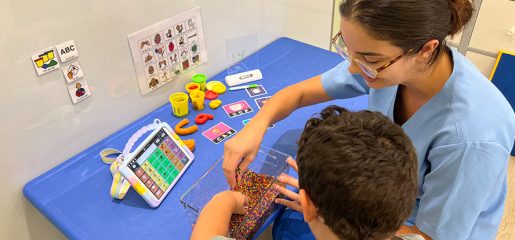Improving balance and coordination in children is vital for their overall physical development. Pediatric physical therapists use a variety of techniques and activities to improve these skills, ensuring that children develop the necessary motor functions for everyday activities and play.
Engage in balance exercises:
Balance exercises are fundamental in pediatric physical therapy. Activities such as standing on one leg, walking on a balance beam, or using a wobble board can significantly improve a child’s balance. These exercises challenge the vestibular system and help children develop better postural control. For younger children, fun games like “Simon Says” or playing “statues” where they have to freeze in different poses can be effective and enjoyable ways to practice balance.
Incorporate core strengthening activities:
A strong core is essential for maintaining balance and stability. Therapists often incorporate core-strengthening exercises like planks, sit-ups, or stability ball activities into their routines. For children, incorporating playful elements such as pretending to be a bridge or a superhero can make these exercises more engaging. Activities like yoga, which focus on core strength and flexibility, can also be very beneficial.
Use sensory integration techniques:
Children with balance and coordination issues often benefit from sensory integration techniques. These involve activities that stimulate the sensory systems, helping the brain process and respond to sensory information more effectively. Examples include playing with textured materials, steering obstacle courses, or using swings and trampolines. These activities improve sensory processing and also improve motor planning and coordination.
Practice coordination drills:
Coordination drills are designed to improve the synchronization of movements. Activities like catching and throwing balls, clapping games, or using hand-eye coordination toys can be very effective. For instance, playing catch with a partner or bouncing a ball against a wall and catching it helps develop hand-eye coordination. Additionally, crossing the midline activities, such as reaching across the body to touch opposite toes, can improve bilateral coordination.
Engage in recreational sports and play:
Recreational sports and play are excellent ways to improve balance and coordination. Sports like soccer, basketball, or gymnastics require and develop these skills naturally. Additionally, simple playground activities like climbing, sliding, and swinging are great for improving balance and coordination. Encouraging children to participate in these activities regularly can lead to significant improvements.
